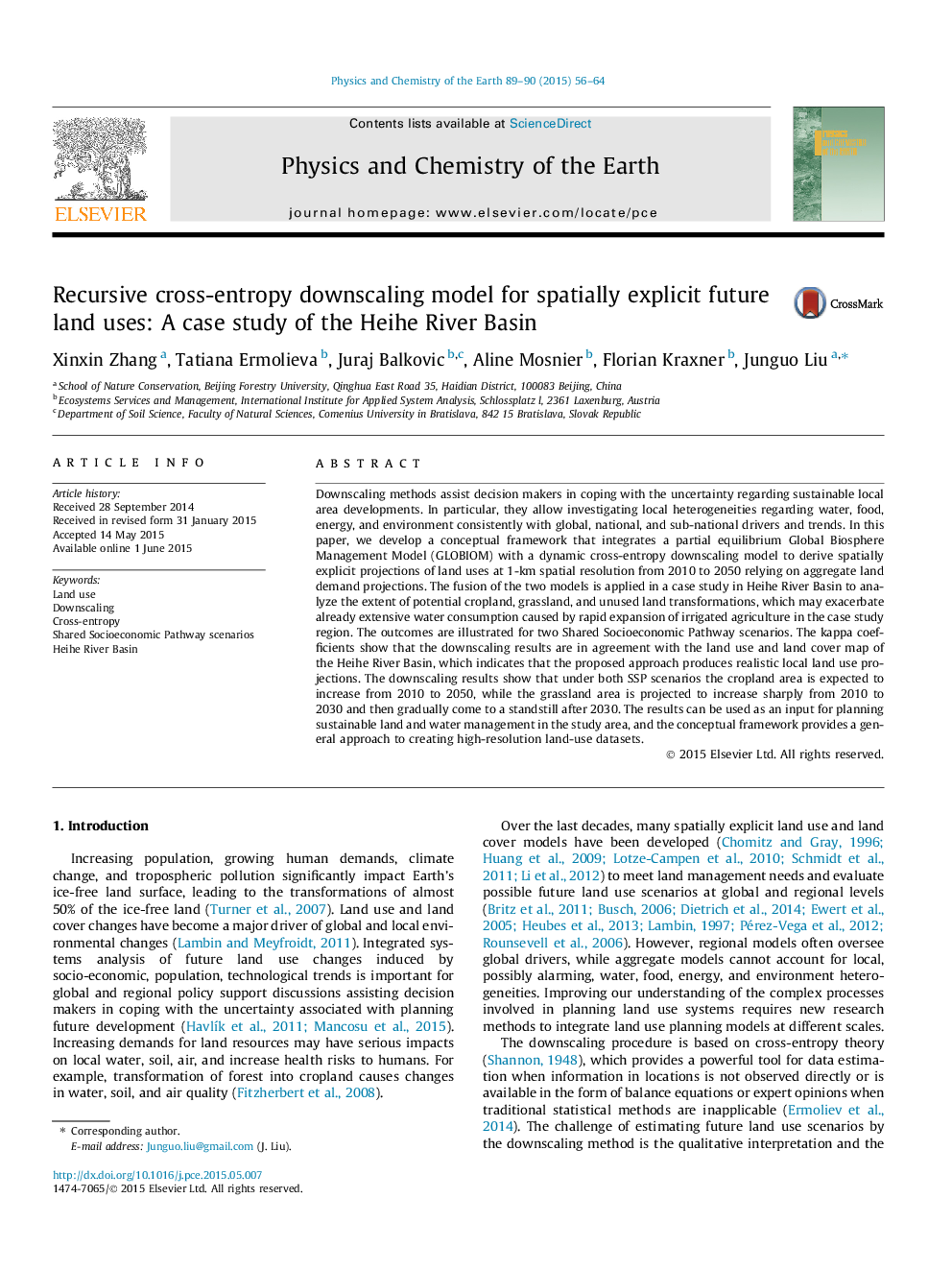| کد مقاله | کد نشریه | سال انتشار | مقاله انگلیسی | نسخه تمام متن |
|---|---|---|---|---|
| 4720870 | 1639348 | 2015 | 9 صفحه PDF | دانلود رایگان |
• A conceptual framework integrates land use model with a downscaling approach.
• The integration produces realistic land use projections in Heihe River Basin.
• This framework provides a way to create high-resolution land-use data.
Downscaling methods assist decision makers in coping with the uncertainty regarding sustainable local area developments. In particular, they allow investigating local heterogeneities regarding water, food, energy, and environment consistently with global, national, and sub-national drivers and trends. In this paper, we develop a conceptual framework that integrates a partial equilibrium Global Biosphere Management Model (GLOBIOM) with a dynamic cross-entropy downscaling model to derive spatially explicit projections of land uses at 1-km spatial resolution from 2010 to 2050 relying on aggregate land demand projections. The fusion of the two models is applied in a case study in Heihe River Basin to analyze the extent of potential cropland, grassland, and unused land transformations, which may exacerbate already extensive water consumption caused by rapid expansion of irrigated agriculture in the case study region. The outcomes are illustrated for two Shared Socioeconomic Pathway scenarios. The kappa coefficients show that the downscaling results are in agreement with the land use and land cover map of the Heihe River Basin, which indicates that the proposed approach produces realistic local land use projections. The downscaling results show that under both SSP scenarios the cropland area is expected to increase from 2010 to 2050, while the grassland area is projected to increase sharply from 2010 to 2030 and then gradually come to a standstill after 2030. The results can be used as an input for planning sustainable land and water management in the study area, and the conceptual framework provides a general approach to creating high-resolution land-use datasets.
Journal: Physics and Chemistry of the Earth, Parts A/B/C - Volumes 89–90, 2015, Pages 56–64
